Trendnet TEW-817DTR
Anyone who travels extensively will be well aware of the vagaries of hotel Wi-Fi. The latter can be a frustrating experience for those who need to remain connected while travelling, and refuse to pay excessive premiums for enhanced performance.
Ironically, many hotels provide a wired connection in rooms, if you only have the means to make good use of it.
The snappily named Trendnet TEW-817DTR is a very portable device designed to do exactly that, providing the functionality of an AC750 wireless router in a pocket-sized enclosure. It retails at $35 or £38 online.
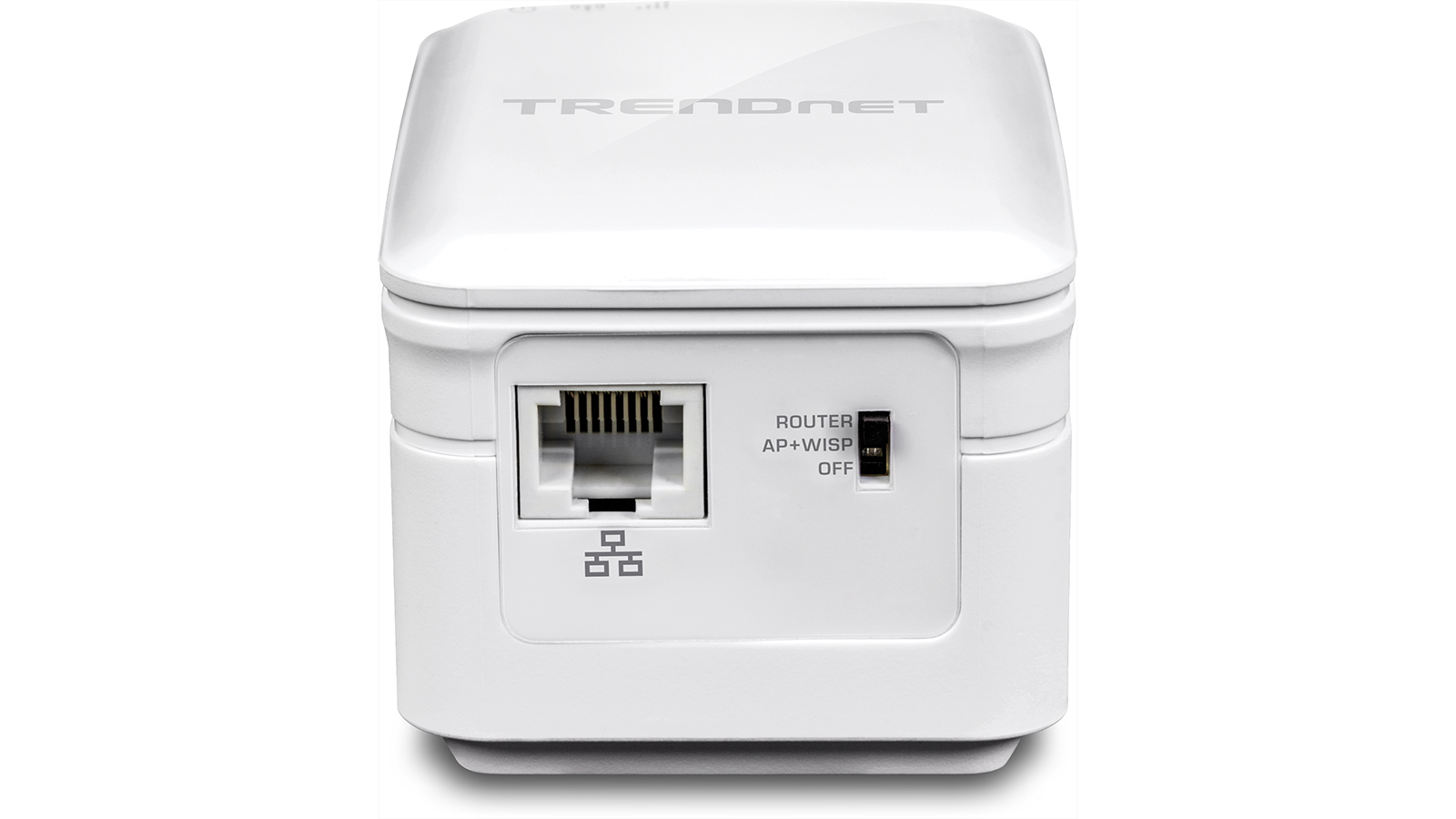
Design
When the firm built this router, Trendnet couldn’t decide if it liked textured or gloss white plastic. Therefore the outside of this small 58 x 47 x 89mm box uses both of these finishes in various places, oddly.
On the front face are some indicator LEDs, underneath is a single RJ45 10/100 Ethernet port plus mode selector, and on the right side is a WPS button and a reset hole.
The rear has that label you always forget to read before plugging the thing in, and a button that releases the power socket pins.
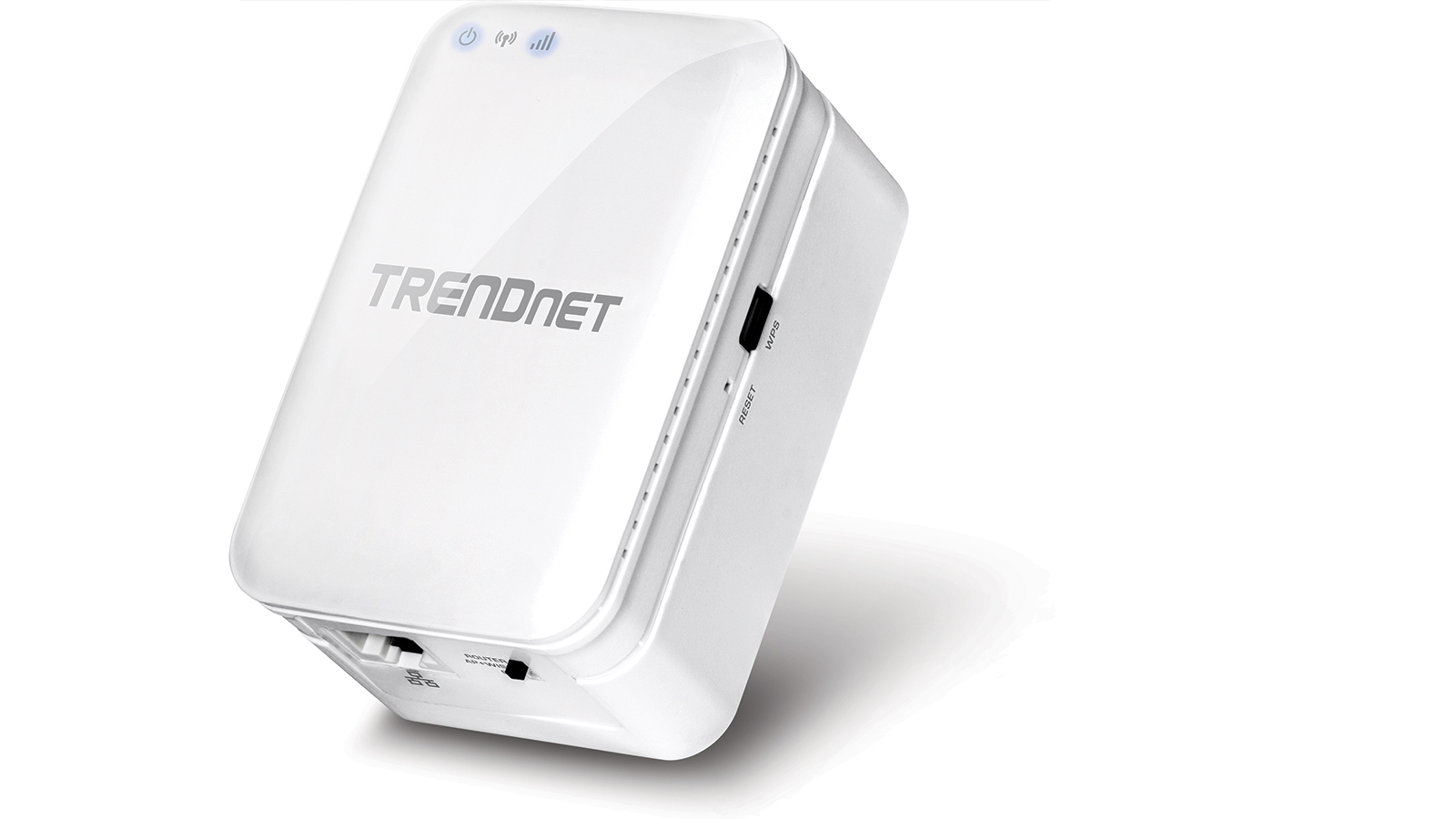
To make the TEW-817DTR of full use to the international traveller, Trendnet included power pins for the three most common standards that should work throughout the US, Europe and the UK.
Our only disappointment with these modules is that Trendnet didn’t include any pouch to hold them, and indeed the TEW-817DTR itself, which could help avoid these things getting lost or damaged.
On the plus side, the company did include drivers on a CD. That’s an option that has become increasingly rare these days, and could well save you from the ‘to-get-online-I-need-to-be-online’ conundrum.
The Wi-Fi connectivity on offer is basic but serviceable, providing AC760 spec services on both 2.4GHz and 5GHz bands without MIMO or any of the derivative acronyms.
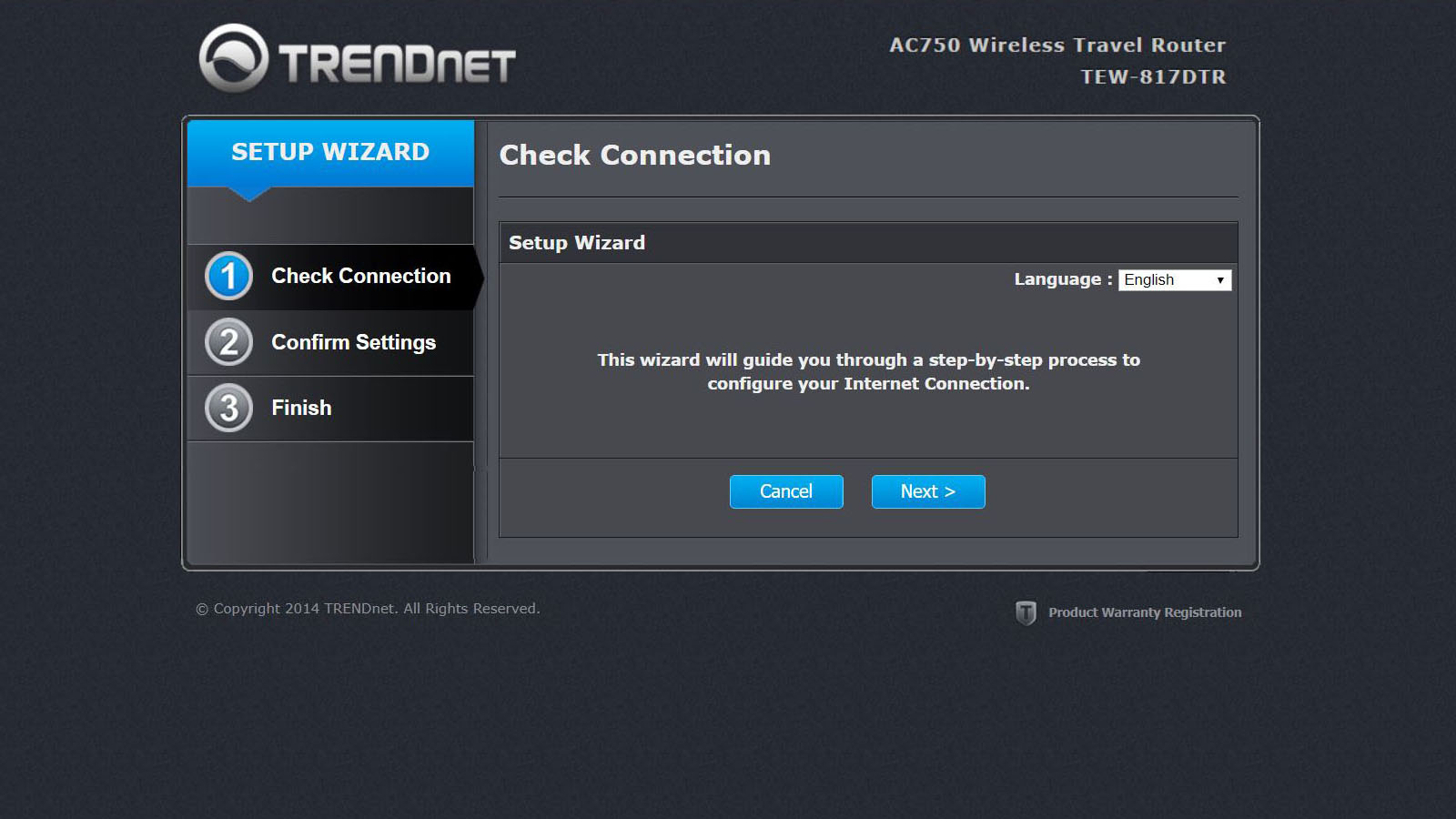
In use
There are two basic ways that this device can be used, and they’re selectable with a switch. In one mode it is a basic wireless access point that requires a wired network connection that it can then connect Wi-Fi users to.
The alternative, mostly of interest to US customers, is AP-WISP mode, where the device can be used to provide a connection point between local Wi-Fi users and a Wireless Internet Service Provider (WISP). These services are increasingly common across America, with more than 50% of locations covered by at least one provider.
Obviously, using this facility would assume that you have a contract with a local WISP provider. The only caveat is that this hardware isn’t compatible with captive portal wireless login pages, should the WISP service use those.
That could be an issue for some, as some hotel chains do use captive portals to control guest access to their networks.
The WISP mode also doubles as a standard access point and repeater, so you can use it to extend an existing wired or wireless network.
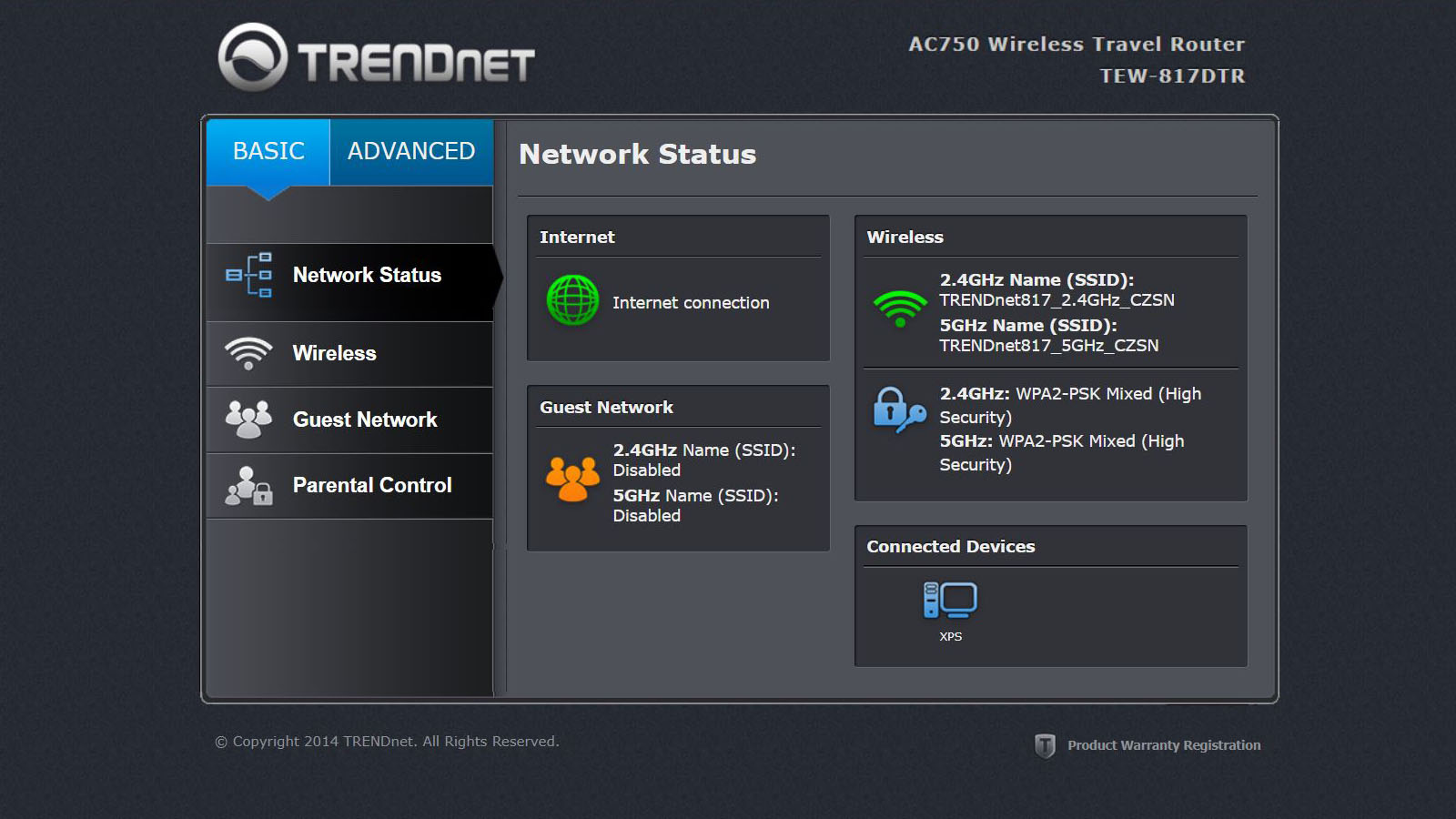
Should all those boxes be ticked, or you have a wired network you can access, then wireless clients that use 802.11a/b/g/n/ac can all connect via the TEW-817DTR with appropriate WPA2 encryption.
The limits of this solution are that this is a single antenna for both 2.4GHz and 5GHz frequency ranges that provides a maximum of 300Mbps on 802.11n and 433Mbps on 802.11ac.
That might be enough bandwidth for a couple of HD video streams, depending on the downstream bandwidth, but it won’t satisfy a room full of conference delegates.
What’s great about this sort of hardware is that when you’ve used it once, and all your devices are familiar with the SSID and password, it can be rapidly deployed.
WISP users need a suitable power outlet, and Ethernet users only require an outlet within cabling distance of the LAN port.
This design could also distribute a network from a laptop that has both a LAN connector and SIM-based internet connection, in a pinch.
So, the flexibility of this solution is excellent; but what about the performance?
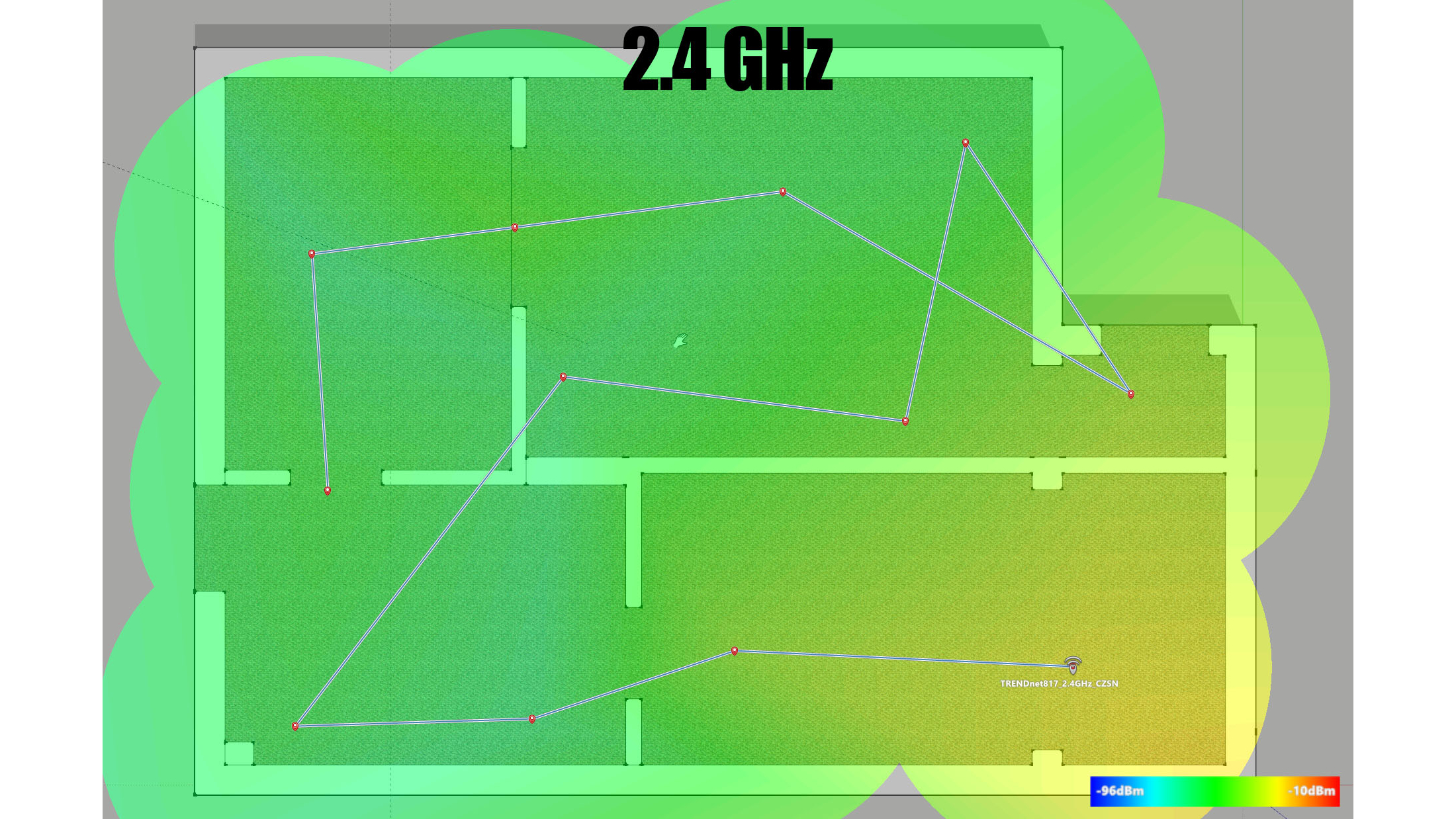
Performance
There is a fine balance to be struck with travel routers like the TEW-817DTR, because most users are looking for a Wi-Fi service that works in a single hotel room or room cluster, not global coverage.
Given the size of the device, and by definition the antenna contained within, we were pleasantly surprised by the range and quality of the connection it offered.
We created a simple performance profile on the ground floor of a modest property using the Netspot site survey tool. The signal remained strong between rooms divided by solid block walls, and over the whole test location.
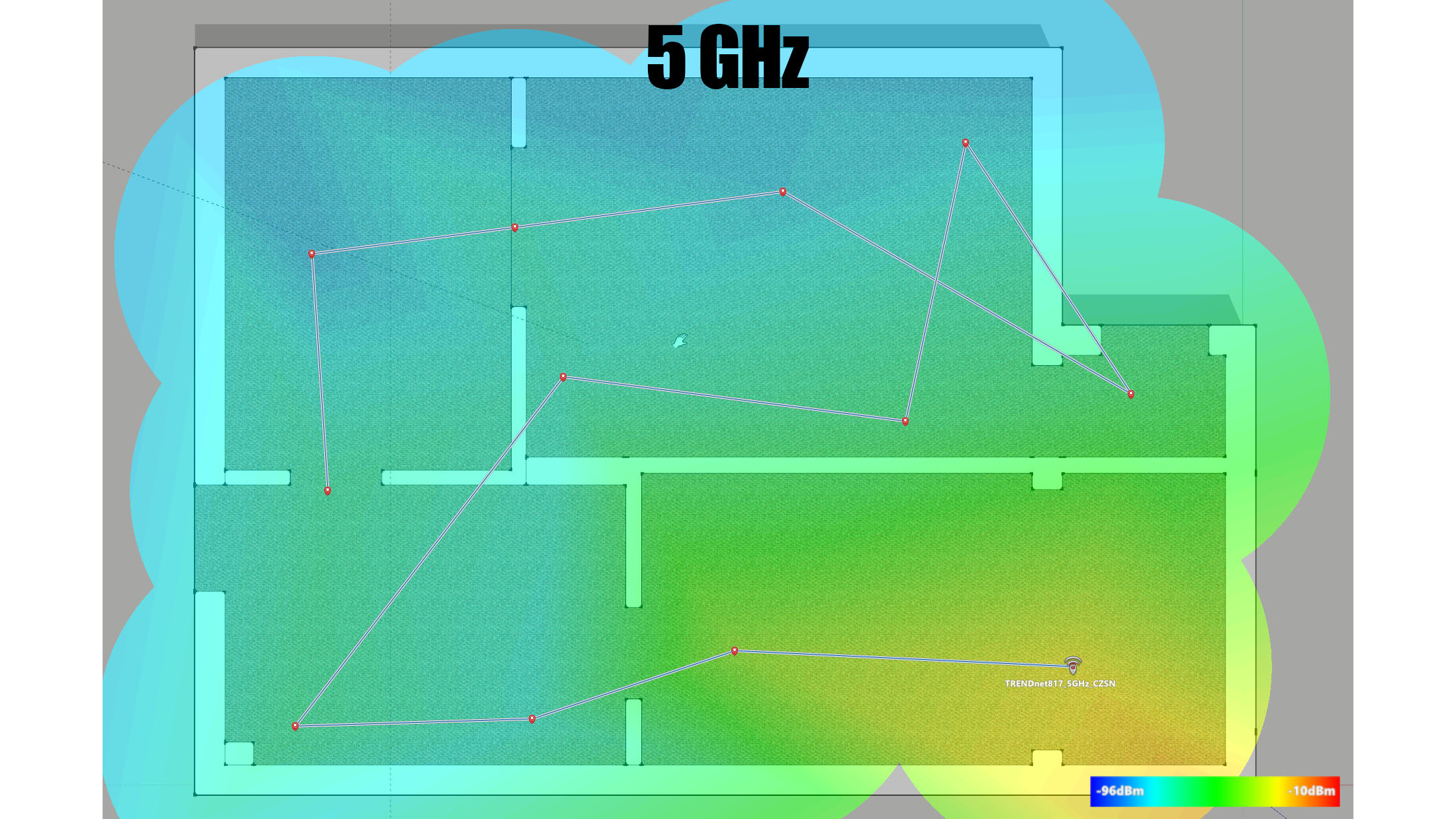
At short range the 5GHz spectrum is superior, but both it and 2.4GHz are strong within a series of adjoining rooms, as you might experience in a hotel. Should a group of team members have adjacent rooms, all should be able to access the router, especially if they choose 2.4GHz over 5GHz. But that might only be needed if the building is exceptionally sturdily constructed.
The fastest connection is via 5GHz, with a theoretical bandwidth pool of 433Mbps or 54MB/s. But realistically the quickest speeds you can get from any source through Ethernet are in the 8-10MB/s range, as dictated by the 10/100 Mbit downlink port.
Ironically, transfers between wireless users can be faster, especially if one is connected via 2.4GHz and the other by 5GHz. In that configuration, it is possible to move more than 25MB/s between devices.
As a dual-band router this is not going to break any speed records, but depending on the broadband bandwidth downstream, it seems more than adequate for a typical use case.
Security
Most travel routers we’ve covered have a very simple feature set, and one that isn’t remotely as extensive as what you’d see in a standard home/office router. That said, the TEW-817DTR has many more features than we reasonably expected, especially in respect of security and client management.
The ability to tier users using guest access, multiple SIDs and parental controls is more granularity than is characteristic with travel routers. There is also PPTP/L2TP/IPsec VPN pass-through, Virtual Server and DMZ definitions, and QoS.
One highlight was that while the documentation only states that the device has WPA2 encryption, once inside the security interface we discovered that this router support WEP, WPA, WPA2 and critically WPA2-Enterprise mode.
Lots of on-campus student accommodation uses Enterprise mode, and therefore this would be the perfect device to distribute Wi-Fi locally in a residential room.
Final verdict
There is little to criticize here, as the TEW-817DTR does pretty much what Trendnet claims on the box. It’s a flexible and affordable solution that can smooth out the bumps associated with remaining connected while away from the office.
If the manufacturer could only address the captive portals restriction, this device would be almost perfect.
- We’ve rounded up the best wireless business routers of 2018
0 comments:
Post a Comment